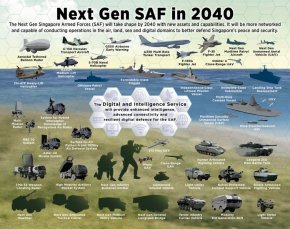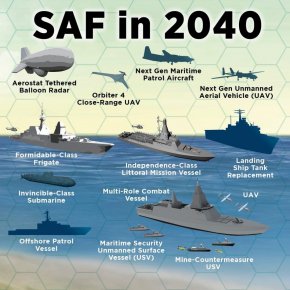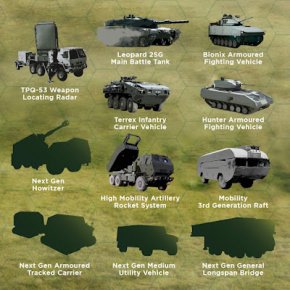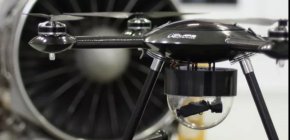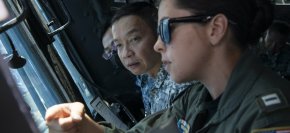Post 1 of 2: 2022 toys to further develop SAR & Special Operations capabilities in the SAF
1. The death of Islamic State leader Abu Ibrahim al-Hashimi al-Quraishi in a US military operation in Syria is a "significant development" in the fight against global terrorism, Singapore's Ministry of Foreign Affairs (MFA) said in a statement on 5 Feb 2022.
2. On 14 Jan 2020, a Singaporean man, Imran Kassim, (36), was found guilty for financing terrorism in a trial. ISD has continued to detect self-radicalised Singaporeans and foreigners. Since 2015, 54 individuals were dealt with under the Internal Security Act for terrorism-related conduct. 44 of them were self-radicalised, of which 14 were dealt with since 2019. Two attack plots against specific communities at their places of worship in Singapore were foiled in late 2020 and early 2021. To underline Singapore’s efforts in counter-terrorism:
3. Bravo Zulu to the Warships team reporting on the minor switchboard fire on the 1st Type 218SG (RSS Invincible), that resulted in 7 months of work — these were in harbour for additional inspections — after the minor damage was quickly repaired.
4. The 1st Type 218SG when it is delivered to Singapore Navy in 2022 (7 months behind schedule), will add to the country’s ISR and special forces (for diver delivery) capabilities.
1. The death of Islamic State leader Abu Ibrahim al-Hashimi al-Quraishi in a US military operation in Syria is a "significant development" in the fight against global terrorism, Singapore's Ministry of Foreign Affairs (MFA) said in a statement on 5 Feb 2022.
(a) Since 2013, the French and the UN have had sizeable deployments to "support the Malian government in combatting terrorism;" a mission that is doomed from the start. France is treating the symptoms of “Terrorism" rather than the causes (climate change, overpopulation and poor government) — the Sahel Region in Africa is seeing increasing violence perpetrated by state and non-state religious and political armed groups. They operate in an environment of growing competition over dwindling resources.
(b) I suspect that the eventual collapse of the French-led counter-terrorism mission in the Sahel Region in Africa would probably have greater long-term ramifications for Europe and Africa in the 2030s than the fall of Afghanistan (to the Taliban) or the increasing levels of violence in Yemen or Iraq. After two coups in Mali since 2020, France and other Western nations complain that the junta has missed deadlines to restore civilian rule and become increasingly hostile to the presence of French and European soldiers on its soil.
(c) In 2021, the Islamic State claimed 50.7 military operations per week on average — there was a total of 2,636 attacks in 22 countries. Peaks in the group’s attacks in Iraq (Apr 2021 to around Aug 2021) and in Nigeria — the highest number of terror attack fatalities in Nigeria occurred in Feb 2021, followed by a June 2020 attack that killed 179 civilians by the Boko Haram. Nigeria’s bandit violence has its roots in clashes between nomadic cattle herders and sedentary farmers over land and resources. But tit-for-tat attacks have over the years spiralled into broader criminality. "Terrorism and violent extremism remain serious threats for countries across the world, including Singapore," said MFA.
(d) Beyond the SAF’s Special Operations Forces (SOF) (as the force of choice), the Singapore Police established In-Situ Reaction Teams (IRTs) and Rapid Deployment Troops (RDTs). These IRTs & RDTs are “specially trained, equipped” first responders to achieve the “political & military imperative” of neutralising terrorists. The SOF have the means (material factors) and will (moral factors) to protect Singapore, as a city, from urban terrorist attacks because of their capabilities in asymmetric warfare, which regular police officers (in IRTs & RDTs) do not possess. Firstly, SOF have superior firepower to perform the mission of responding effectively to domestic attacks than police IRTs and RDTs. Secondly, special forces have unique intelligence collection capabilities – such as non-official covers & advanced ISR technologies to track and monitor terrorists.
2. On 14 Jan 2020, a Singaporean man, Imran Kassim, (36), was found guilty for financing terrorism in a trial. ISD has continued to detect self-radicalised Singaporeans and foreigners. Since 2015, 54 individuals were dealt with under the Internal Security Act for terrorism-related conduct. 44 of them were self-radicalised, of which 14 were dealt with since 2019. Two attack plots against specific communities at their places of worship in Singapore were foiled in late 2020 and early 2021. To underline Singapore’s efforts in counter-terrorism:
(a) The SAF deploys it’s brand new H225M helicopters, and special forces at Star Vista mall in a night-time counter-terrorism exercise on 7 Feb 2022 night. Singapore has taken delivery of five H225Ms since the first aircraft arrived in the country in late 2021, with 125 Squadron in the process of converting to the new type. While there are no public announcements about how many H225Ms Singapore has on order, French civil aviation registration data suggests 16 airframes were built.
(b) Members of the Special Operations Task Force rappelled from a H225M helicopter hovering above the roof of a 15 storey office building cum retail mall (The Star Vista mall, in Buona Vista), which is part of a large residential estate. This was part of a counter-terrorism exercise conducted by the SAF throughout Monday night to test its operational readiness in a "realistic urban setting", said Mindef. Several of these systems are unique to the Singaporean H225Ms, with engineers and other personnel from Singapore having been sent to Airbus Helicopters in France to work on the integration and certification.
(c) On 20 Jan 2022, the Singapore Navy commissioned the last 2 of 4 Sentinel-class Maritime Security and Response Vessels (MRSVs) under the Maritime Security and Response Flotilla. This consists of 4 refurbished patrol vessels and 2 tug boats on lease, with 4 new purpose-built vessels set to replace the MRSVs in due course. The MRSVs will augment the 8 Independence-class littoral mission vessels (LMVs) to secure Singapore’s waters against intrusions by vessels sent by the Malaysian Government.
(d) The MRSVs and LMVs will operate along with Maritime Security USVs to patrol Singapore's waters. Therefore, there is manned and unmanned teaming in the vessels deployed for maritime security work. This manned and unmanned teaming includes the 22-metre long Specialised Marine Craft (SMCs) form part of the Singapore Navy’s capabilities in maritime security operations. With a crew of 4, the SMCs are armed with a stabilized 12,7 mm OTO Melara Remote Weapon System. The Defence Technology Prize Team (Engineering) Award secured by the SMCs designers back in 2006 and the tight lid SAF imposed on any image or mention of the SMC's warfighting potential until 2015, provide telling hints on how special this craft really is.
3. Bravo Zulu to the Warships team reporting on the minor switchboard fire on the 1st Type 218SG (RSS Invincible), that resulted in 7 months of work — these were in harbour for additional inspections — after the minor damage was quickly repaired.
4. The 1st Type 218SG when it is delivered to Singapore Navy in 2022 (7 months behind schedule), will add to the country’s ISR and special forces (for diver delivery) capabilities.
(a) When the NDU commemorated its 50th anniversary in Dec 2021, the formation restructured to strengthen its capabilities to respond to unconventional threats, which has grown in scale and complexity.
(b) The restructured NDU is responsible for the development of "raise-train-sustain" capabilities for maritime special operations, which ranges from underwater security operations, underwater explosive ordnance disposal to maritime counter-terrorism operations.
(c) Key skills to support special operations in the maritime domain, such as end-to-end ship boarding capabilities, will also be centralised under the NDU. This will enable the NDU to better support operations by SAF task forces such as the Maritime Security Task Force and the Special Operations Task Force. The NDU will also operate the Combat Craft Large (CCL). The CCL, first developed in 2018 and unveiled in 2021, is a 26 m-long craft designed to be highly maneuverable and to achieve high speeds, and armed with a stabilized 12,7 mm OTO Melara Remote Weapon System.
Last edited:

